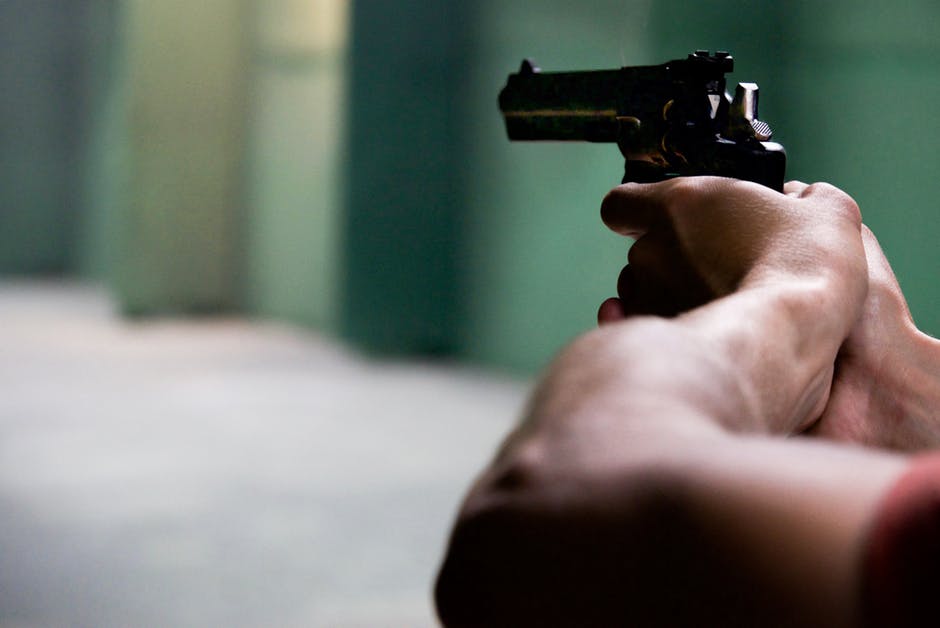Aiming for Safety: How to Hold a Gun Correctly
Are you interested in learning how to handle a gun?
Whether you’re a trained professional or a beginner, there are correct ways to hold a gun and hold it safely. If you don’t take the time to learn, you could put yourself at risk and even harm others around you.

Knowing how to hold a gun correctly is important for gun owners and those looking to own one.
Luckily, you’ve come to the right place. Below, we’ve provided a quick, basic guide on handling a gun and not putting yourself or anyone else in harm’s way.
Let’s get started!
The Grip: Foundation for Control
The way you grip a firearm has a significant impact on your ability to control it. A proper grip enhances stability, reduces recoil, and improves accuracy. Here’s how to establish a solid grip:
Hand Placement
Your dominant hand should be your primary control hand. Right-handed individuals use their right hand as the dominant hand. Meanwhile, left-handed individuals use their left hand.
Your support hand should complement the grip of your dominant hand. Place it on the handle of the firearm so that it meets the fingers of your dominant hand. The support hand should apply pressure on the grip to help control recoil.
Finger Placement
Your trigger finger should remain outside the trigger guard until you are ready to fire. Keep it extended along the frame of the firearm. This practice prevents accidental discharges when you’re not intending to shoot.
Your support hand’s thumb should rest on top of your dominant hand’s thumb. This technique is often called “thumbs-forward.” It provides better recoil control and allows for quick follow-up shots.
Grip Pressure
Maintain a firm but not overly tight grip on the firearm. Squeezing too tightly can lead to muscle fatigue and reduced accuracy. Also, too loose of a grip can cause the gun to shift during recoil.
Wrist Alignment
Your wrists should be in alignment with the bore axis of the firearm. This means that the gun should be an extension of your arm, with no awkward bends in your wrist. Proper wrist alignment helps control recoil and ensures accuracy.
Stance: The Foundation for Stability
A stable shooting stance is essential for maintaining control and accuracy when pointing a gun. Shooters, each with its advantages, use several common stances. But, all effective stances share some common elements:
Feet Placement
Stand with your feet shoulder-width apart to provide a stable base. Distribute your weight evenly between both feet. This helps absorb recoil and maintain balance.
Body Position
Face your target, with your body perpendicular to it. Keep your upper body slightly forward, leaning into the shot. This helps manage recoil and maintain control.
Knees Slightly Bent
Bend your knees slightly to provide flexibility and absorb recoil. Your knees should be relaxed, not locked.
Forward Shoulder
The shoulder of your non-dominant side should be slightly forward, aligning with your target. This stance helps minimize the profile of your body and provides better control.
Lean Into the Gun
As you raise the gun to aim, lean forward into the shot, bringing your upper body over your knees and feet. This forward lean helps manage recoil and aids in target acquisition.
Aiming: Precision and Accuracy
Aiming is the heart of shooting accurately. To aim correctly, follow these steps:
Focus on the Front Sight
When aiming, your primary focus should be on the gun’s front sight. The front sight should be sharp and clear. The rear sight and target appear slightly blurred.
Align the Sights
Ensure the front sight is centered and level within the rear sight notch. Proper sight alignment is crucial for accurate shooting.
The sight picture is the relationship between the aligned sights and the target. Place the front sight on the target, ensuring it covers the point of impact you desire. This is known as “putting the sights on target.”
Trigger Control
While maintaining sight alignment and picture, press the trigger smoothly and steadily. Avoid jerking the trigger, which can cause the gun to move off target.
Follow-Through
After the shot breaks, maintain your sight picture and trigger control. Keep your focus on the front sight and be prepared for follow-up shots if necessary.
Recoil Management
Recoil is the backward force generated when a firearm is fired. Properly managing recoil is essential for maintaining control and accuracy. Here are some tips for effective recoil management:
Stance and Grip
Your stance and grip play a significant role in controlling recoil. A firm grip with thumbs forward and a stable stance helps absorb and redirect recoil energy.
Proper Shoulder Contact
Ensure that your shoulder has solid contact with the stock or grip of the firearm. This helps distribute recoil forces evenly and reduces felt recoil.
Controlled Breathing
Practice controlled breathing to help stabilize your body and reduce muscle tension. Take a deep breath, let it out halfway, and hold it momentarily as you squeeze the trigger.
Practice
Recoil management improves with practice. Start with smaller caliber firearms and work your way up as you become more comfortable with recoil control.
Holster and Ready Positions
When not actively shooting, it’s essential to maintain safe and ready positions for your firearm. Holstering and drawing your weapon should be done with care and attention to safety. Follow these guidelines:
Holstering
When holstering your firearm, keep your trigger finger outside the trigger guard. Ensure the muzzle is pointed in a safe direction and that no obstructions are in the holster.
Ready Position
When not aiming at a target, keep the firearm in a low-ready or high-ready position. The low-ready position involves holding the gun close to your chest, pointed downward. The high-ready position involves holding the gun close to your chest, pointed upward.
Trigger Discipline
Proper trigger discipline is paramount. Your finger should never touch the trigger until you’re ready to fire.
When practicing at a gun range in Texas, you can hone your skills under the supervision of experienced range officers. This ensures that firearm safety remains a priority during your training sessions.
Learn How to Hold a Gun Correctly Today
Properly holding a gun is crucial for both our safety and the safety of others. Following the guidelines mentioned in this article can teach us how to hold a gun and reduce the risk of accidents and mishaps.
Remember, proper training and practice are key to mastering this skill. Take the necessary steps and always prioritize safety when handling a firearm. Practice makes perfect, so keep aiming for safety.
For more informative articles, please visit the rest of our blog.


